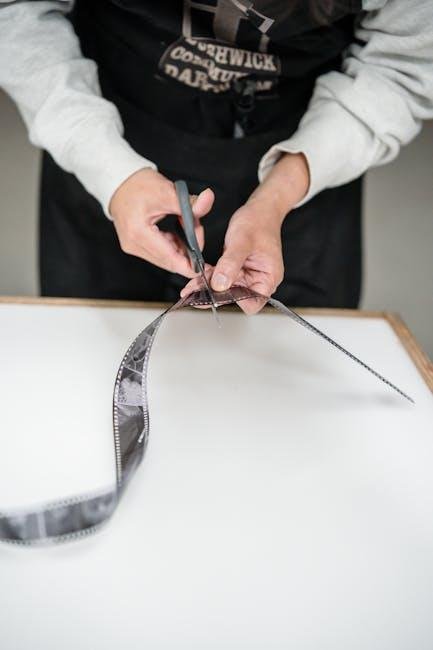Hey there, curious minds! If you’ve been scrolling through social media, you might have stumbled upon some buzz about DIY gene editing. It sounds like something straight out of a sci-fi movie — people tinkering with genes in their garages or kitchens. But what’s really going on here? Is this the future of science in everyone’s hands, or a recipe for chaos? In this blog post, we’re diving into the fascinating and sometimes controversial world of DIY gene editing. Whether you’re a science geek, a concerned citizen, or just plain curious, let’s unpack what all the fuss is about and why it matters to all of us.
Table of Contents
- Understanding the Basics of DIY Gene Editing and Its Growing Popularity
- Exploring the Ethical Concerns and Safety Risks Around DIY Gene Editing
- Real-Life Cases That Sparked the Debate and What We Can Learn
- Practical Tips for Engaging in Responsible and Informed DIY Gene Editing
- In Summary
Understanding the Basics of DIY Gene Editing and Its Growing Popularity
At its core, DIY gene editing refers to the practice of individuals experimenting with genetic modification techniques outside of traditional professional laboratories. With the rise of affordable tools like CRISPR kits becoming accessible to the public, more hobbyists and biohackers are diving into the world of genetics. This democratization sparks both excitement and concern, as the line between professional science and home experimentation begins to blur. It’s fascinating to see how what was once confined to advanced research institutions is now something anyone curious enough can explore, fostering a culture of innovation and scientific curiosity at a grassroots level.
The growing popularity of DIY gene editing can be attributed to several factors, including:
- Access to affordable and easy-to-use gene editing tools, allowing amateur scientists to participate in genetic research.
- Online communities and resources that support learning, troubleshooting, and sharing experiments.
- A desire to push boundaries and explore biology hands-on, fueled by both curiosity and a do-it-yourself spirit.
However, this surge also raises important ethical debates about safety, regulation, and the potential consequences of unsupervised genetic manipulation. The conversation around DIY gene editing is as much about its promise as it is about the responsibilities that come with these powerful technologies.
Exploring the Ethical Concerns and Safety Risks Around DIY Gene Editing
DIY gene editing, fueled by affordable tools like CRISPR kits, is opening a fascinating frontier for science enthusiasts and hobbyists alike. However, this democratization comes with a minefield of ethical dilemmas and safety concerns that cannot be ignored. The ease of manipulating genetic code outside of controlled laboratories raises questions about unintended consequences — from ecological impacts to the creation of genetically modified organisms without proper oversight. At its core, the issue revolves around responsibility: how do individuals balance curiosity and innovation with the potential risks their experiments might unleash on themselves and the wider community?
Adding to the complexity are serious safety considerations that extend beyond the individual DIY biologist. Without expert supervision or rigorous safety protocols, there’s a risk of accidental contamination, spread of modified genes, or even the development of harmful pathogens. Some key concerns include:
- Biosecurity risks: Inadvertent creation of dangerous microbes.
- Lack of regulation: Difficulty monitoring and controlling gene-editing experiments.
- Long-term effects: Unknown consequences of releasing edited organisms into ecosystems.
These points underscore why many experts advocate for clear guidelines, education, and collaboration between regulators and the DIY community to ensure gene editing is approached thoughtfully and safely.
Real-Life Cases That Sparked the Debate and What We Can Learn
One striking example that thrust the DIY gene-editing debate into the spotlight involved a community biohacker who attempted to edit his own genes using CRISPR kits purchased online. While his intentions—exploring personal health enhancements—were sincere, the scientific community raised alarms over the potential risks, including unintended mutations and the absence of proper medical supervision. This case illuminated the urgent need for clear guidelines and widespread education about the limitations and dangers of unsupervised gene editing, especially when accessibility to CRISPR technology grows rapidly.
Additionally, amateur experiments on genetically modifying pets have stirred emotional and ethical debates worldwide. These efforts, often driven by personal curiosity or the desire to create “designer” organisms, underscore several key lessons:
- The importance of ethical considerations before altering living beings.
- The potential environmental impacts of introducing edited genes outside controlled lab settings.
- The need for community dialogue between scientists, hobbyists, and regulators to establish responsible practices.
Practical Tips for Engaging in Responsible and Informed DIY Gene Editing
Embarking on DIY gene editing is an exciting yet complex journey that demands respect for both the science and ethical boundaries involved. First and foremost, educate yourself thoroughly—think beyond basic tutorials. Dive into reputable scientific literature, take specialized courses, and understand the potential risks and limitations of the technologies you are experimenting with. Always prioritize safety by working in a controlled environment, such as a properly equipped home lab or community biotech space, and never skip on personal protective equipment.
Collaboration can be a game changer, too. Connect with experienced hobbyists, professional scientists, or online forums where you can ask questions and share insights. This community wisdom helps prevent costly mistakes and fosters responsible innovation. And remember, ethical considerations should always be front and center. Avoid altering human DNA unless under approved clinical or research protocols, and be mindful of the ecological impact if working with microorganisms or plants. Ultimately, being informed and cautious transforms DIY gene editing from a risky gamble into an enlightening creative adventure.
In Summary
And there you have it—the DIY gene editing debate in a nutshell! Whether you’re excited about the incredible potential or a bit wary of the risks, it’s clear that this topic isn’t going anywhere anytime soon. As technology becomes more accessible, the conversation around ethics, safety, and innovation will only get louder. So, whether you’re a curious hobbyist, a science enthusiast, or just someone trying to make sense of it all, it’s worth staying informed and engaged. After all, the future of gene editing might just be in our hands—literally! Thanks for reading, and feel free to share your thoughts below. What do you think about DIY gene editing?
Related Products
-
Sale!
Easy@Home 50 Ovulation Test Strips and 20 Pregnanc…
Mom Original price was: $19.98.$12.81Current price is: $12.81. -
Sale!
Regal Games Card Games for Kids – Go Fish, Crazy 8…
Kids Original price was: $16.99.$12.99Current price is: $12.99. -
J.VER Men’s Cotton Linen Short Sleeve Shirts Casua…
Clothing $19.99







